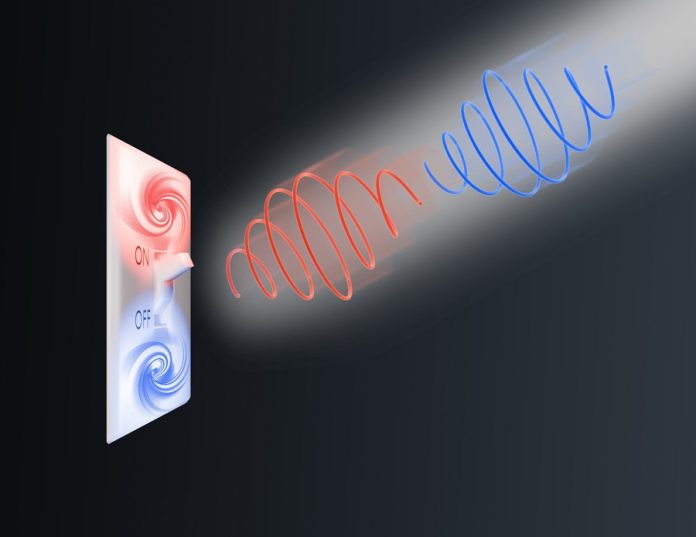
Scientists have discovered a completely new way to store digital information—using light and a rare class of materials called ferroaxials.
The breakthrough could lead to next-generation memory devices that are faster, more stable, and less vulnerable to damage than today’s technologies.
The study, published in Science, was conducted by researchers from the Max Planck Institute for the Structure and Dynamics of Matter (MPSD) in Germany and the University of Oxford.
They found that they could switch ferroaxial materials between two stable states using a single flash of polarized terahertz light—a form of light that oscillates trillions of times per second.
This means data could be written and read at incredible speeds, all without electricity or magnetism.
In digital technology, every piece of information—photos, documents, or apps—is stored as a pattern of 0s and 1s.
To record and change those bits, devices rely on physical systems that can flip between two stable states. Traditional materials that do this are called ferroic materials.
For example, ferromagnets can be magnetized in two opposite directions, while ferroelectrics can hold opposite electric polarizations.
These materials form the foundation of today’s data storage technologies, from hard drives to computer chips.
But these systems have weaknesses. Magnetic materials can lose their state when exposed to strong external fields, and ferroelectric materials can become unstable over time.
Scientists have been searching for new materials that are both fast and stable—and ferroaxials could be the answer.
Ferroaxial materials are unique because they host swirling patterns of electric dipoles—tiny charged regions that twist clockwise or counterclockwise, like miniature whirlpools.
These “vortex states” are extremely stable and resistant to outside interference. However, until now, controlling them has been nearly impossible.
The research team led by Professor Andrea Cavalleri overcame that challenge using circularly polarized terahertz light, which can make the atoms inside a crystal move in circular paths.
This creates what the scientists call a synthetic effective field, capable of flipping the vortex direction of the ferroaxial state—similar to how a magnetic field switches a magnet.
“By changing the twist of the light pulse, we can select whether the material settles into a clockwise or counterclockwise state,” explained researcher Michael Först. “That means we can store information in light-controlled, stable states without the usual limitations of electric or magnetic systems.”
Professor Cavalleri described the finding as “an exciting step toward ultrafast, light-controlled data storage.”
Because ferroaxial materials are naturally stable and free from interference, they could one day form the backbone of non-volatile memory—devices that keep data even when the power is off—ushering in a new era of energy-efficient computing.



